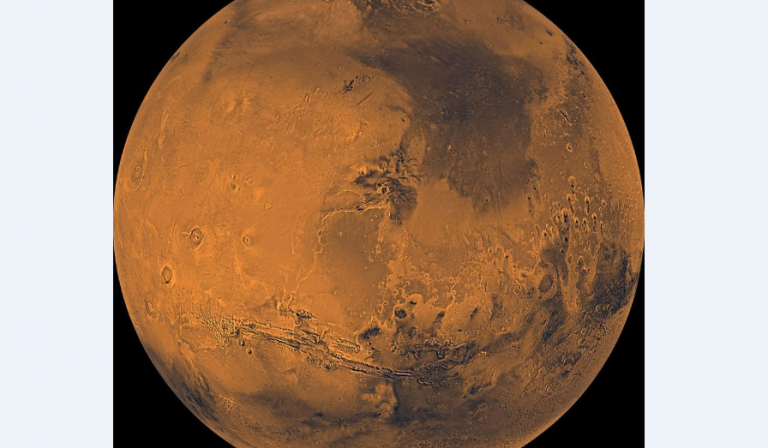Many tiny patches of the ground on modern Mars may be capable of supporting life as we know it, if only very briefly, a new study suggests.
Water ice is abundant on and near the Martian surface, but conditions have to be just right for this stuff to give rise to liquid water. That’s because the Red Planet’s atmosphere is quite thin — just 1% as dense as Earth’s air at sea level — so ice tends to sublimate, or turn directly into vapor, when temperatures rise sufficiently. (Specifically, the ice evaporates before temperatures rise enough to hit water’s melting point.)
The study identifies a microenvironment that could host those just-right conditions: the areas directly behind certain boulders in midlatitude regions of Mars that lie in the rocks’ shadows continuously during the winter months.
Water ice and carbon-dioxide ice accumulate seasonally in these shadowy spots, according to computer simulations performed by study author Norbert Schorghofer, a senior scientist at the Planetary Science Institute in Tucson, Arizona.
Read more: space
Ask me anything
Explore related questions





